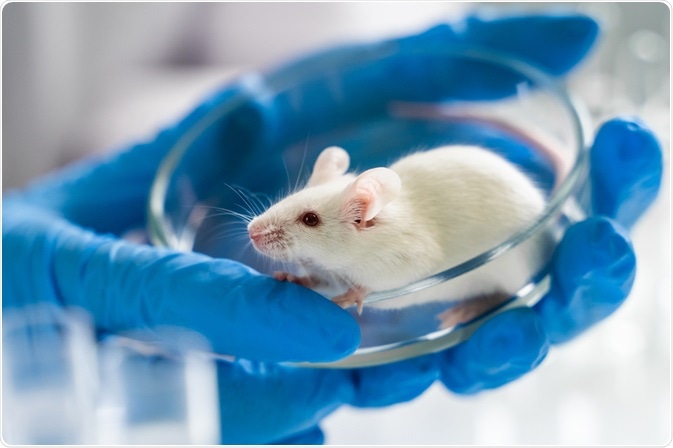Discovery of a Novel Rodent Model for the Study of the Immunomodulatory Pathways of Human Smallpox
A duo from the Centers for Disease Control and Prevention in Atlanta have developed a means of determining whether the CAST/EiJ rodent model is susceptible to infection by variola virus (VARV), the causative agent of smallpox.
 Image Credits: Egoreichenkov Evgenii / Shutterstock.com
Image Credits: Egoreichenkov Evgenii / Shutterstock.com
While the CAST/EiJ mouse was found to be an unsuitable model for clinical smallpox, due to limited skin lesion and limited morbidity, an enzyme-linked immunosorbent assay (ELISA) measured a robust immune response. This presents an advantageous model for the study of the immunomodulatory pathways following VARV infection.
VARV is the causative agent of smallpox, and concurrently offers protection against infection by the Orthopoxvirus genus. Owing to the cessation of routine vaccination against Orthopoxvirus, there is concern regarding the potential biological threat posed by VARV. Therefore, research efforts have centered on effective vaccines and antiviral compound efficacy against VARV.
The pandemic potential posed by VARV alongside its scientific interest which stems across therapeutic and vaccine development, genomic analysis, and discovery research, has prompted the development of animal models. The most promising surrogate models for smallpox have included the prairie dog-monkeypox model.
This model is limited as the VARV infection leads to a rapid fulfillment of the disease with primates dying within the first week of inoculation. Human infection, however, has an incubation period of a week or longer and is accompanied by symptoms including general ill-health and fever. This is proceeded by the characteristic skin rash.
These features, however, are inconsistent with those displayed in the non-human primate VARV model. Hence, despite its advantages including its study potential for therapeutics, virulence factors, and vaccine efficacy, it is limited.
The CAST/EiJ mouse overcomes these imitations being highly susceptible to a range of Orthopoxviruses at lower infectious doses relative to other mouse strains. The strain is particularly sensitive to the Monkeypox virus (MPXV).
Together with minimal intrinsic variability and greater availability of immunologic reagents, the ability to improve medical countermeasures is expanded; namely, the potential bioterrorist that mandates the need to identify new antiviral treatments and safer vaccines.
The team used the CAST/EiJ mouse mode to determine if it could serve as a suitable model for VARV infection and whether the degree of subjective clinical signs could be altered by dose.
To achieve this, 30 mice were intranasally inoculated with 105 or 106 plaque-forming units (pfu) VARV. Two mice received the diluent only and served as a control. Oral, ocular, and anal swabs were systematically taken from the mice, and they were routinely evaluated for skin lesions. Indication of an immune response was determined by the detection of VARV immunoglobulin type G (IgG) via ELISA.
The infection led to systemic spread, including the respiratory tract. The result of respiratory spreading was concurrent with that found by Titova et al., 2015. The group did not find any appreciable difference in viral spread between younger and older mice, although younger mice possessed greater viable oral viruses in comparison to older mice.
All animals inoculated with the virus demonstrated high levels of VARV IgG antibody at day 21.
Gallardo-Romeroa et al. found antiviral or therapeutic evaluation difficult as levels of morbidity and mortality were low and absent, respectively. Moreover, the absence of skin lesions and severe clinical signs of the disease resulted in the conclusion that the CAST/EiJ mouse was an unsuitable model for clinical smallpox. Despite this, the immunological response detected places this model above existing rodent models for VARV (SCID, and non-human primates) in understanding the immunomodulatory pathways that are challenged in response to VARV infection.
Source
Gallardo-Romeroa, N.F. et al. (2020) Use of live Variola virus to determine whether CAST/EiJ mice are a suitable surrogate animal model for human smallpox. Virus Research. Doi: https://doi.org/10.1016/j.virusres.2019.197772
Titova, K.K et al. (2015) Using ICR and SCID mice as animal models for smallpox to assess antiviral drug efficacy. J. Gen. Virol. doi: 10.1099/vir.0.000216
Further Reading
- All Model Organisms Content
- Drosophila as a Model Organism
- Zebrafish as a Model Organism
- Devising a General Microbial Model Evaluation Framework for Microbiology Research
- C. elegans as a Model Organism
Last Updated: Mar 16, 2020

Written by
Hidaya Aliouche
Hidaya is a science communications enthusiast who has recently graduated and is embarking on a career in the science and medical copywriting. She has a B.Sc. in Biochemistry from The University of Manchester. She is passionate about writing and is particularly interested in microbiology, immunology, and biochemistry.
Source: Read Full Article
